#秒速5センチメートル
Explore tagged Tumblr posts
Text




𝐚𝐧𝐢𝐦𝐞 5 Centimeters per second • 秒速5センチメートル (2007) 𝐬𝐭𝐮𝐝𝐢𝐨 CoMix Wave Inc. 𝐝𝐢𝐫. Makoto Shinkai 𝐜𝐡𝐫. 𝐝𝐞𝐬𝐢𝐠𝐧𝐞𝐫 Takayo Nishimura
𝘴𝘰𝘶𝘳𝘤𝘦: 𝘮𝘺 𝘴𝘤𝘳𝘦𝘦𝘯𝘴𝘩𝘰𝘵𝘴
#anime scenes#anime movie#00s anime#2000s anime#makoto shinkai#5 centimeters per second#秒速5センチメートル#bg5centimeterspersecond
4 notes
·
View notes
Text




#秒速5センチメートル#5 centimeters per second#Byōsoku Go Senchimētoru#Anime#Animation#アニメ#アニメーション#Makoto Shinkai#新海誠
19 notes
·
View notes
Text

秒速5センチメートル
4月に栃木に行った時の写真
岩船駅は小さい無人駅
雪の降る今の時期だとアニメの舞台どおりの雪の岩船駅が見られると思う






5 notes
·
View notes
Text

youtube
#aesthetic#animation#anime#2d animation#retro#retrostyle#lofi#gif#aestethic#aesthetics#Byousoku 5 Centimeter#秒速5センチメートル#5 Centimeters per Second#2007#film#makoto shinkai#train#metro#japan#beauty#beautiful#sad#sadness#melancholy#anime gif#animation gif#snow#winter#winter coming#Youtube
10 notes
·
View notes
Photo
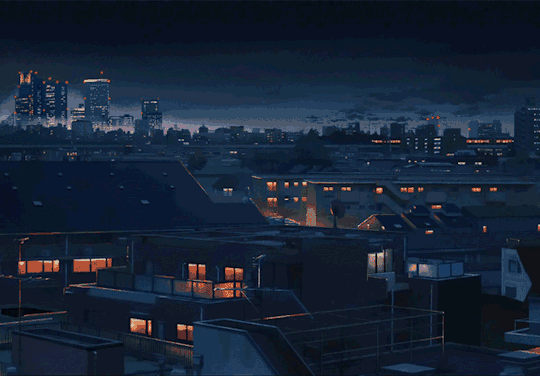
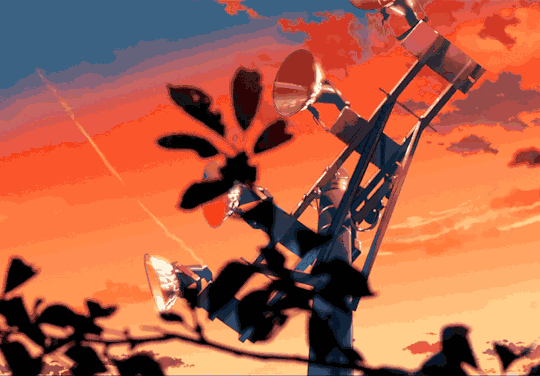
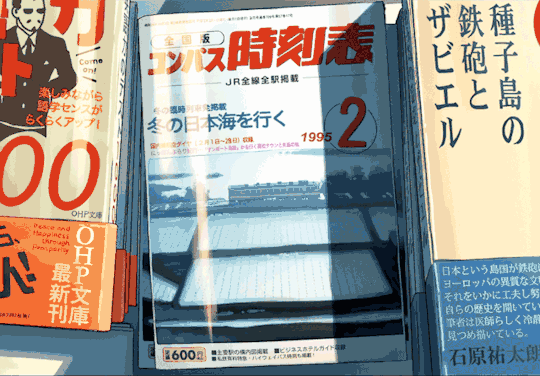

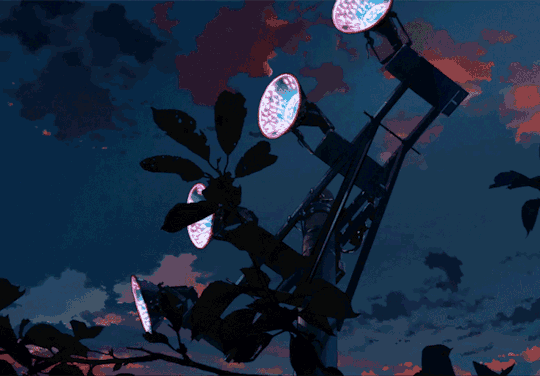


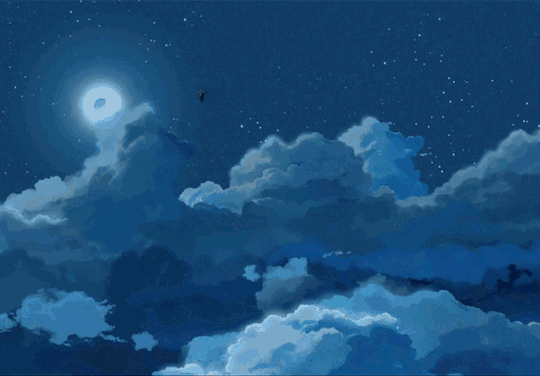
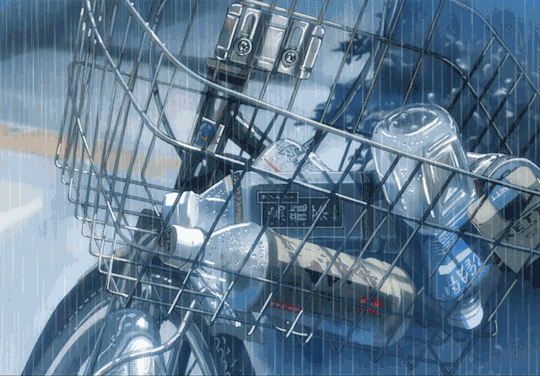
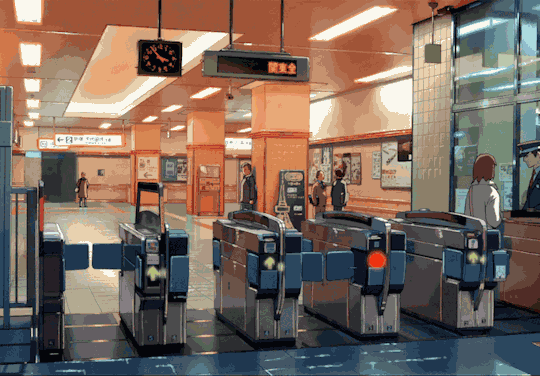
5 Centimeters Per Second (秒速5センチメートル), 2007 ⤷ scenery ✧・゚
#5 centimeters per second#anime aesthetic#anime scenery#fyanime#fyanimegif#fyanimanga#fyanimegifs#fymanganime#allanimanga#anisource#animegif#anime gif#anime#animedaily#dailyanime#animangaboys#edit#bl-astoise
394 notes
·
View notes
Text
Im a new person now but the same is true for everyone else ⏳️ im running out of time ⏳️ 秒速 5センチメートル
6 notes
·
View notes
Quote
「こだま」「ひかり」はどっちが速いのかわかるのでうれしい。「さくら」は正直秒速5センチメートルくらいで動いてそう
XユーザーのSo Takamotoさん
11 notes
·
View notes
Text
Anime Movies Rewatch Selection
Even though I still have quite a lot to watch, there are times when I feel like I want to rewatch. Especially when my memories about it starting to blur more and I want to feel that feeling again. Here I tried to make a list of some anime movies I would like to rewatch~
Yoru wa Mijikashi Arukeyo Otome 夜は短し歩けよ乙女 (2017) and Inu-Ou 犬王 (2021) / Masaaki Yuasa


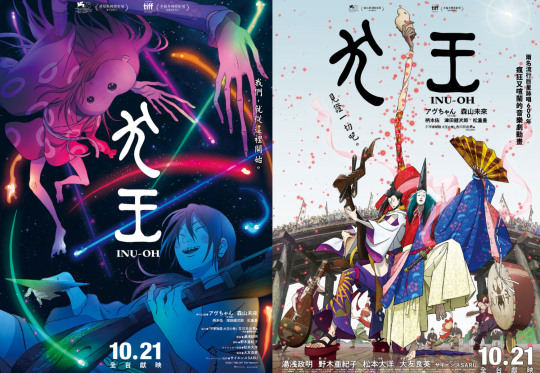
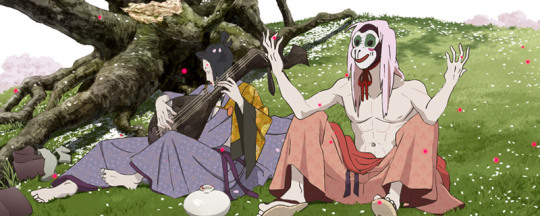
I often get attracted with something surreal. Masaaki Yuasa's movies are like an hour and a half ride into someone's mind that makes me bemused and mesmerized. Yoru wa Mijikashi Arukeyo Otome is eccentric and since I enjoy Youjouhan Shinwa Taikei quite much, it's great to see them again~ Storywise, perhaps they skipped some (or a lot?) parts of the book (I haven't read it yet), it might be not a whole experience but still fun to watch! Inu-Ou is interesting, cool performances! Though I may need some time before I rewatch because the ending is heart-wrenching, it's not that surprising considering that era often has tragic stories, but still, there is a lingering feeling that I need to be prepare for. Mind Game (2004) also interesting (weird) movie that I may considering to rewatch. The visual of Masaaki Yuasa's movies are interesting. Maybe, when I just don't feel like thinking of anything, I will find myself rewatching them.
Paprika パプリカ (2006) and Tokyo Godfathers 東京ゴッドファーザーズ (2003) / Satoshi Kon
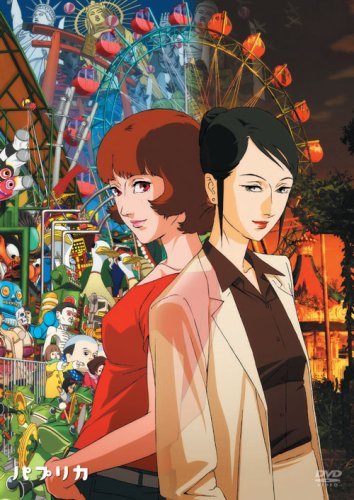
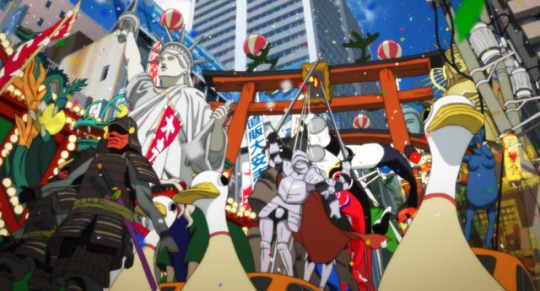
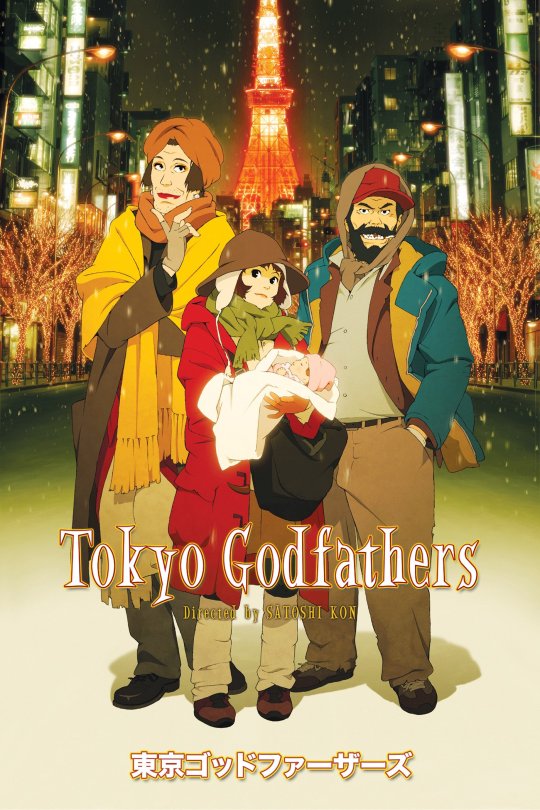

Satoshi Kon's movies are must-watch! Though his movies that I will rewatch are Paprika and Tokyo Godfathers, Perfect Blue (1997) and Sennen Joyuu (2001) are very good too. His storytelling, the surrealism. Even though I probably will not get a happy fluffy feeling after rewatch, his movies somehow stuck on my mind that I can't help myself from thinking about them when I want to watch something fascinating.
Kimi no Na wa 君の名は。(2016) and Byousoku 5 Centimeter 秒速5センチメートル (2007) / Makoto Shinkai
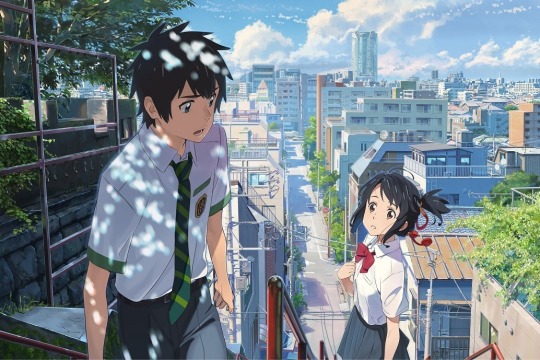
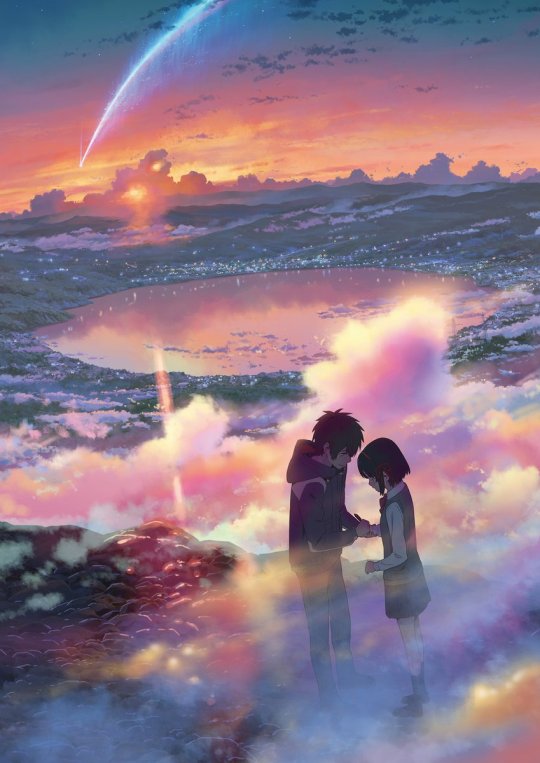
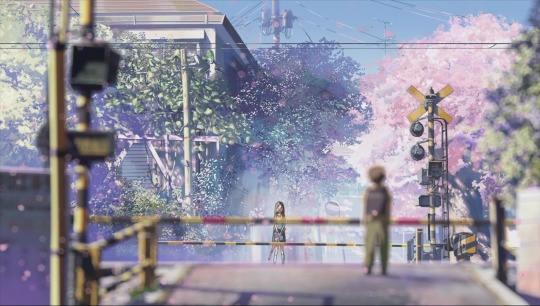
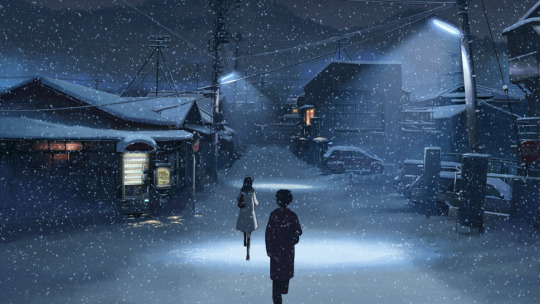
Other than the recent one (Suzume), I have watched most of Makoto Shinkai's works and my top favorites that I want to rewatch are Kimi no Na wa and Byousoku 5cm. The first movie that makes me interested to watch Shinkai's upcoming movies is Byousoku 5cm. It's slow at first half or perhaps 2/3 of the movie? I was a bit sleepy in the middle but still want to continue, and that last part, it got me awake. 'One More Time, One More Chance' started playing and I couldn't get off my eyes from screen even for a second. Mixed emotion, all came at high speed. Those lingering feelings. We can stay in contact no matter how far we are now, but that period of time, the distance, and that point when they passed each other. Life. Then, there's Kimi no Na wa~! I have rewatched it pretty soon after first watch, maybe because it gave a good feeling at that time. It's delightful and beautiful, a phenomenon of love story that transcend time and space. I like what Taki wrote in Mitsuha's hand when they're about to be separated.
Bakemono no Ko バケモノの子 (2015) and Toki wo Kakeru Shoujo 時をかける少女 (2006) / Mamoru Hosoda
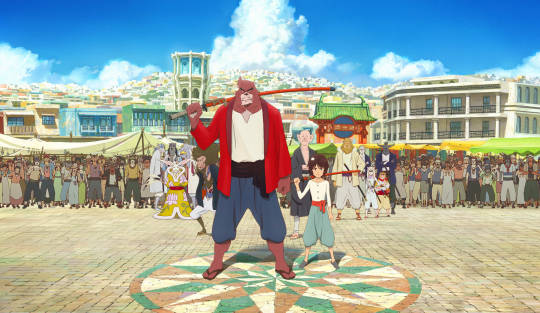
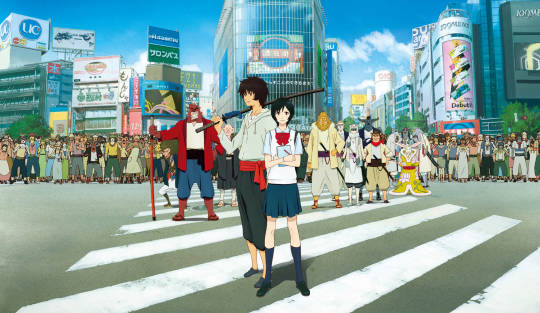
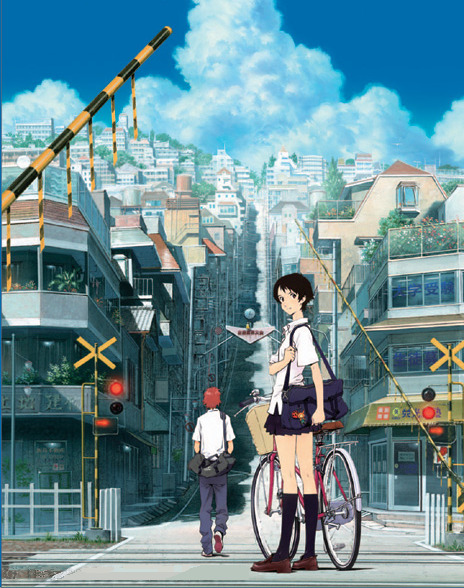
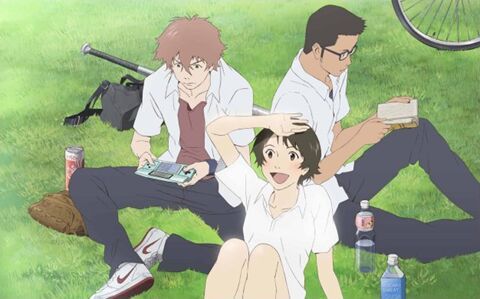
Mamoru Hosoda's movies can be enjoyable or quite boring for me but I often interested in watching his movies. My top favorites that I want to rewatch are Bakemono no Ko and Toki wo Kakeru Shoujo. I also may considering Ookami Kodomo no Ame to Yuki (2012) when I am in the mood for something emotional and family. I remember watching Bakemono no Ko was fun, though my memory of its story already blurred. I also remember that Toki wo Kakeru Shoujo is nice and bittersweet. Toki wo Kakeru Shoujo probably the first time travel anime I watched. Since it's been a long time, I want to rewatch them someday.
Heisei Tanuki Gassen Ponpoko 平成狸合戦ぽんぽこ (1994, Isao Takahata), Sen to Chihiro no Kamikakushi 千と千尋の神隠し (2001, Hayao Miyazaki), Mononoke Hime もののけ姫 (1997, Hayao Miyazaki), Mimi wo Sumaseba 耳をすませば (1995, Yoshifumi Kondo) / Studio Ghibli
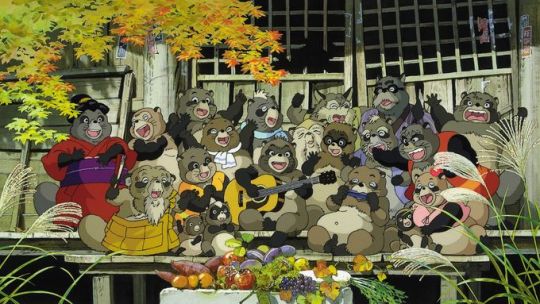
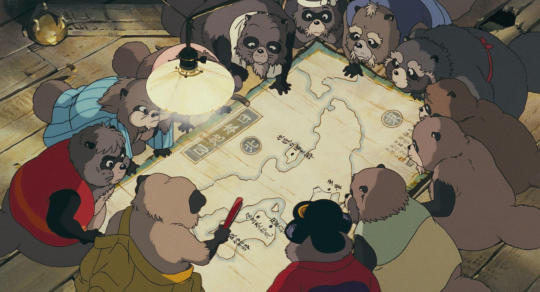
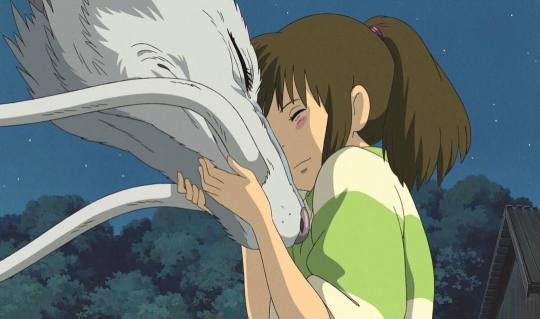
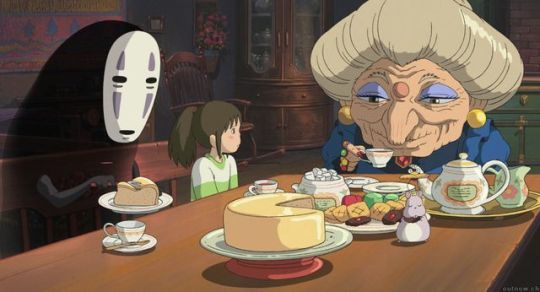
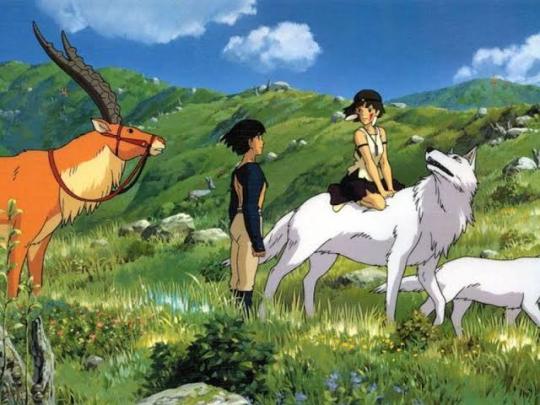
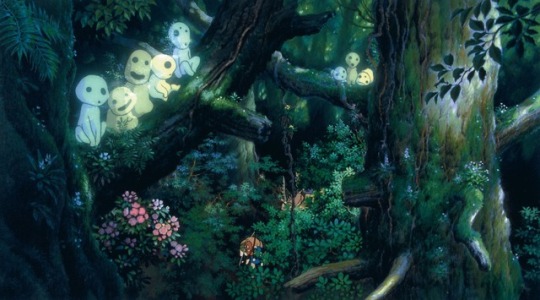
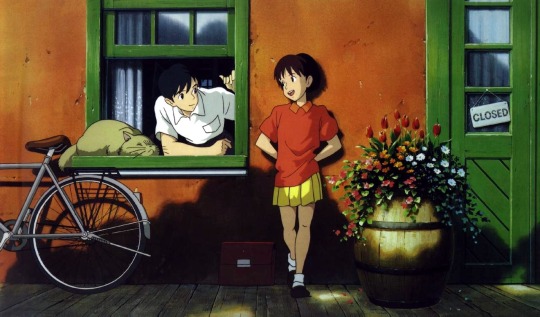
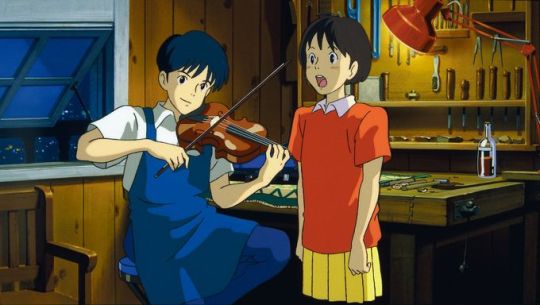
I have watched most of Studio Ghibli's movies~! My top favorites are Pom Poko, Spirited Away, Mononoke Hime and Whisper of The Heart. I might rewatch other Ghibli movies for their wonderful background art. Heisei Tanuki Gassen Ponpoko is adorable and entertaining but also has a heartfelt message. Sen to Chihiro no Kamikakushi is the first Ghibli movie I watched, it's enchanting. I also like Kaonashi when it become a good spirit, it's adorable. Mononoke Hime is captivating and I like forest, Kodama~! I am attracted with stories of humankind co-existing with nature. Mimi wo Sumaseba is lovely and I like their nostalgic vibe. Other than these four, I may considering to rewatch Omoide Poro Poro (1991) too, someday.
Hope I have time to rewatch all I want, in between my to-watch and to-read long list 👁👄👁
4 notes
·
View notes
Text
A Different Perspective (A Heroism 101: Back to Basics Spin-off)
https://ift.tt/c9SsGgL by Toasthatisordinary While Alain is away for the time being, a new guide, fresh out of training, takes over to show the MHA universe a different set of alternate realities from the multiverse. Some of these universes have heroes in them, and others do not. What will happen on this new guide’s first day on the job? Words: 987, Chapters: 1/?, Language: English Fandoms: 僕のヒーローアカ���ミア | Boku no Hero Academia | My Hero Academia (Anime & Manga), Arcane: League of Legends (Cartoon 2021), Cyberpunk: Edgerunners (Anime), Red vs. Blue, Assassination Classroom, Batman (Movies - Nolan), The Batman (Movie 2022), The Penguin (US TV 2024), 秒速5センチメートル | 5 Centimeters per Second (2007), 言の葉の庭 | Kotonoha no Niwa | Garden of Words (2013), 君の名は。| Kimi no Na wa. | Your Name. (2016), 天気の子 | Tenki no Ko | Weathering with You (2019), すずめの戸締り | Suzume no Tojimari | Suzume's Locking Up (2022), 聲の形 | Koe no Katachi | A Silent Voice (2016), Pantheon (Cartoon), Blue Eye Samurai (Cartoon), Whiplash (2014), La La Land (2016), Mononoke-hime | Princess Mononoke, Howl no Ugoku Shiro | Howl's Moving Castle, Majo no Takkyuubin | Kiki's Delivery Service, unOrdinary (Webcomic), Hand Jumper (Webcomic), Batman: Arkham (Video Games), Batman: Under the Red Hood (2010) Rating: Mature Warnings: Graphic Depictions Of Violence, Major Character Death Categories: Gen Characters: Class 1-A (My Hero Academia), Yagi Toshinori | All Might, Sasaki Mirai | Sir Nighteye, Torino Sorahiko | Gran Torino, Todoroki Enji | Endeavor, Takami Keigo | Hawks, Hakamata Tsunagu | Best Jeanist, Usagiyama Rumi | Miruko, Kamihara Shinya | Edgeshot, Sakamata Kuugo | Gang Orca, Takeyama Yuu | Mount Lady, Toyomitsu Taishirou | Fat Gum, Tatsuma Ryuuko | Ryuukyuu, Iida Tensei | Ingenium, Tobita Danjuurou | Gentle Criminal, Aiba Manami | La Brava, Eri (My Hero Academia), Izumi Kouta, Tsukauchi Naomasa, Wild Wild Pussycats (My Hero Academia), U.A. Faculty (My Hero Academia), U.A. Students (My Hero Academia), U.A.'s Big Three (My Hero Academia), Tsutsumi Kaina | Lady Nagant, League of Villains (My Hero Academia) Additional Tags: Reaction, Personal Growth, Slow Burn via AO3 works tagged 'JONES Diana Wynne - Works' https://ift.tt/iE4Z82m
0 notes
Text







𝐚𝐧𝐢𝐦𝐞 5 Centimeters per second • 秒速5センチメートル (2007) 𝐬𝐭𝐮𝐝𝐢𝐨 CoMix Wave Inc. 𝐝𝐢𝐫. Makoto Shinkai 𝐜𝐡𝐫. 𝐝𝐞𝐬𝐢𝐠𝐧𝐞𝐫 Takayo Nishimura
𝘴𝘰𝘶𝘳𝘤𝘦: 𝘮𝘺 𝘴𝘤𝘳𝘦𝘦𝘯𝘴𝘩𝘰𝘵𝘴
5 notes
·
View notes
Text
The Distance of Cherry Blossoms

5 Centimeters per Second (Japanese: 秒速5センチメートル, Hepburn: Byōsoku Go Senchimētoru) is a 2007 Japanese animated romantic drama film written and directed by Makoto Shinkai. It premiered on March 3, 2007, and has since become known for its heartfelt narrative and beautiful animation.
Awards & Adaptations 🏆
The film won Best Animated Feature Film at the 2007 Asia Pacific Screen Awards. It also inspired a novel adaptation in November 2007 and a manga version illustrated by Seike Yukiko in 2010.
Plot Summary 📜
Set in Japan from the early 1990s to 2008, 5 Centimeters per Second is divided into three segments, each exploring different stages in the life of Takaki Tōno and his relationships.
Episode 1: Cherry Blossom In 1991, Takaki Tōno befriends Akari Shinohara at their elementary school in Tokyo. Despite their close bond and shared interests, Akari moves away in 1994. Takaki decides to visit her one last time before his family relocates. Despite a lost letter and a snowstorm delaying him, they share a significant moment, but both realize they are drifting apart.
Episode 2: Cosmonaut By 1999, Takaki is in high school on Tanegashima. Kanae Sumida, a classmate, has harbored feelings for him since middle school but struggles to confess. Takaki, preoccupied with memories of Akari, fails to notice Kanae’s affections. Kanae eventually accepts that Takaki’s heart is set elsewhere and decides to keep her feelings to herself.
Episode 3: 5 Centimeters per Second In 2008, Takaki is a Tokyo programmer, unable to move on from Akari, who is about to marry someone else. Takaki’s emotional struggle leads him to quit his job. Meanwhile, Akari finds an old letter she wrote to Takaki years earlier. Both recall their last meeting and the promise to watch cherry blossoms together. They briefly reconnect at a train crossing, only for the train to separate them once more.
Characters 👤
Takaki Tōno (Voiced by: Kenji Mizuhashi / David Matranga / Johnny Yong Bosch) The film’s protagonist, Takaki, frequently moves due to his parents’ jobs. He and Akari become close friends, but their paths diverge after she moves away.
Akari Shinohara (Voiced by: Yoshimi Kondō / Ayaka Onoue / Hilary Haag / Erika Weinstein / Tara Platt) Takaki’s best friend and early love interest. She moves to Tochigi after elementary school, and their communication dwindles over time.
Kanae Sumida (Voiced by: Satomi Hanamura / Serena Varghese / Kira Buckland) A high school classmate who loves Takaki but struggles to express her feelings. She eventually accepts that Takaki is seeking something beyond her reach.
Production Notes 🎨
Makoto Shinkai’s 5 Centimeters per Second marks a departure from his previous fantasy and sci-fi works, focusing instead on realistic portrayals of love and separation. The title refers to the speed at which cherry blossom petals fall, symbolizing the slow drift of relationships and the passage of time.
1 note
·
View note
Text
季節の変化を感じる服 - amachi. "Fluctuation Line One Piece" / "Fluctuation Line SS Shirt"

こんばんは。
・
今日、家の近くの桜の木を眺めてみると、僅かだが桜が咲いていた。
本格的な桜の開花が間近に迫る頃。
そんな桜の開花の時期になると、毎年見たくなる映画がある。
映画「君の名は」でお馴染み、新海誠監督の作品「秒速5センチメートル」だ。
・
新海誠作品の中で、僕が最も好きな作品が「秒速5センチメートル」になる���
公開されたのが2007年ということで、振り返ると僕が大学生の頃だ。
・
そしてそんな「秒速5センチメートル」が、なんと3/29からリバイバル上映をしてくれるそうだ。
桜前線の北上に合わせて上映をするそうで、九州から南関東までは3/29から公開。北関東から北海道は4/12から公開するそうだ。
「桜前線上映」なんて粋なことをしてくれる。
・
せっかくなので、今年は家で見るのではなく、映画館に足を運んで見ようかなぁと思っている。
(当時見た感想と今見る感想は結構違うんだけど、それはそれで面白い。)

さて、本題に。
本日は素敵なテキスタイルを使った"amachi."のアイテムを紹介させてもらおうと思う。
無意味に見える冒頭のお話も、実は多少なりリンクをしたりしているかも。
なので、ちょっと長いけど、最後までご覧いただけると嬉しく思う。

amachi. : Fluctuation Line One Piece (Green × Blue) ¥63,800 (tax in)

amachi. : Fluctuation Line One Piece (Brown × Pink) ¥63,800 (tax in)

amachi. : Fluctuation Line SS Shirt (Green × Blue) ¥59,400

amachi. : Fluctuation Line SS Shirt (Brown × Pink) ¥59,400
”Phenology”をシーズンテーマに据えた中でのアイテムとなる。
以下ブランドより発表されたテキストになる。
-----------------------------------------
Collection 014 / SS2024 ��Phenology”
ツバメの飛来、桜の開花、河の凍結など
すべての生態学的現象は季節の移ろいとともに始まり、終わる
動物、植物、自然現象、それぞれががもつ周期性
常に変化しながら、様々な組み合わせとして現れる ”風景”
そのリズムや移り変わりそのものをテーマにしたコレクションを創ってみたい
そう考えていた頃、“季節学” と呼ばれる学問が存在することを知った
膨大なフィールドワークをもとに
動植物と自然環境の相互関係や連鎖を観測し研究する分野である
対象は自然界に留まらず、人々が夏服・冬服を纏う初日/末日を観測するなど
人間社会への観察をも含んだ
まさに ”万物が気候に応じて変化するありさま” をとらえる学問であった
一年を二つのシーズンに分け、およそ半年間のワードローブを
一つのコレクションとして発表する周期の中で
私たちなりに、季節と向き合い、思考する
これまで当然のように繰り返してきたことに改めて向き合う “季節学”
冬枯れから春へ向かう時期、ツバメや花々が見せるある瞬間の色の組み合わせのような
心に残る情景に感性をゆだねて表現したシーズンとなった
----------------------------------------
"amachi."のコレクションを通じて知った「季節学」。
季節の移ろいと生物の活動周期を研究する学問になるそうだ。
・
僕らも服を季節の移ろいに合わせて変えるように、私たちの生活に非常に密着した学問であり、気がつけば身体に浸透しているような。
そんな学問でもある。
・
今朝のニュースで、「春バテ」という、あまり聞き馴染みのない単語を知った。
今年は特に「春バテ」をする人が多いそうだ。
理由としては、春になっても肌寒い日が多いことが原因だということだ。
冬が寒いのは当たり前だと身体が覚えているのだが、いつまでも寒いことで、私たちの身体の周期もズレてしまい、自律神経の調整が効かなくなっているのだ���う。
・
朝ご飯を食べながら、ボーッとした頭で、これも「季節学」の分野なのだろうか。
なんてことを考えてしまった。
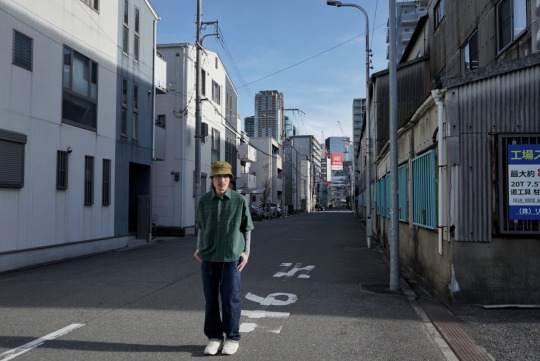
そんな"Phenology"のリサーチを通じて生まれたコレクションのアイテム。
特に個人的にはテキスタイルに心を奪われたアイテムとなる。

細かいので、着画ではなかなかと伝わりにくいのだけど、近くで見るとステッチワークのような柄がとても素敵だ。
・
"amachi."の服に可愛いという表現が適しているのか分からないのだけど、僕としてはなんとも愛おしくて、可愛らしいテキスタイルだと感じた。
・
"Green × Brown"カラーは、冬から春にかけて、深く暗い緑に覆われた森に霧が立ち込めるイメージから生まれている。言わば針葉樹の森だ。だから、刺繍のような柄の部分に用いられている��には、青みのかかった糸が用いられている。
一方、"Brown × Pink"カラーは、枯れ木に満ちた初春をイメージしている。葉が落ち、枯れ枝のみが残った色の失われた世界。そんな森に梅の花が咲き始めた様子になるそうだ。なのでこちらは広葉樹の森だ。そのため、刺繍のような柄の部分に用いられている糸には、ピンクの糸が用いられている。
・
山に近いエリアで育った僕には、とても懐かしい風景でもある。
まあ、正直、梅の花までは思い出せない。
でも冬の間、茶色だった山に、あちらこちらで桜が咲き始めて、それが徐々に深い緑へと変わっていく。そんな山が色を取り戻す風景を思い出してしまった。
・
さて、この不思議な柄はもちろん「織」でできている。
どうやったらこんな生地ができるのだろうか。
素敵なテキスタイルに出会うとすぐにそんなことを考えてしまう。
もはや反射と言っても良い。
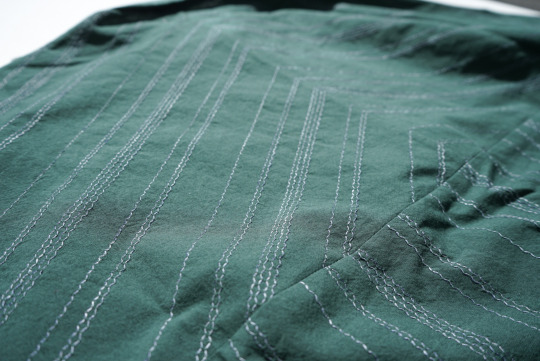
話を聞くと、実はこの生地に使われているテクニックは事故から生まれたというお話だ。
また、僕の心をくすぐるようなお話ではないか。
・
生地加工の段階で糸が収縮し、ジグザグの刺繍のような柄になってしまったということだ。(専門的な話ですみません。)
なので、狙ったというよりは、生地トラブルだ。
でも、工場に行くとそういった話を聞く機会は多いのだ。
面白い生地を作るような工場に行けば、色んなことに挑戦しているので、なおさらそういった話を伺う機会が多い。
・
さて、今回この2着に共通してオススメしたいポイントは、この素敵な生地の柄合わせになる。

ワンピースは縦、横、斜めに生地を切り替えながら。

シャツはフロントと背面、それぞれピッタリと柄が来るように。
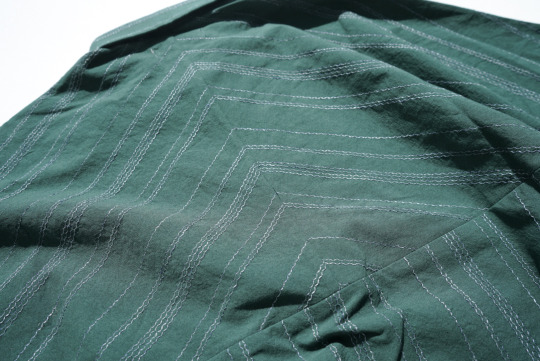
生地の使い方もデザインの一つとして、このアイテムのアクセントに一役買っているのだ。
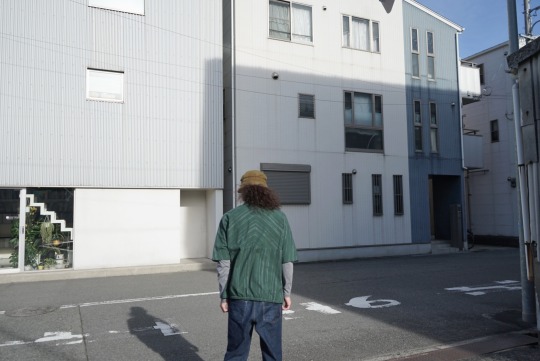
ちょっと分かりにくいけど、背中の斜めの柄合わせが効いて、非常に構築的な見た目が素敵だ。
・
ちょうどたまたま、先週非常にハイクオリティな縫製工場へお邪魔する機会があった。
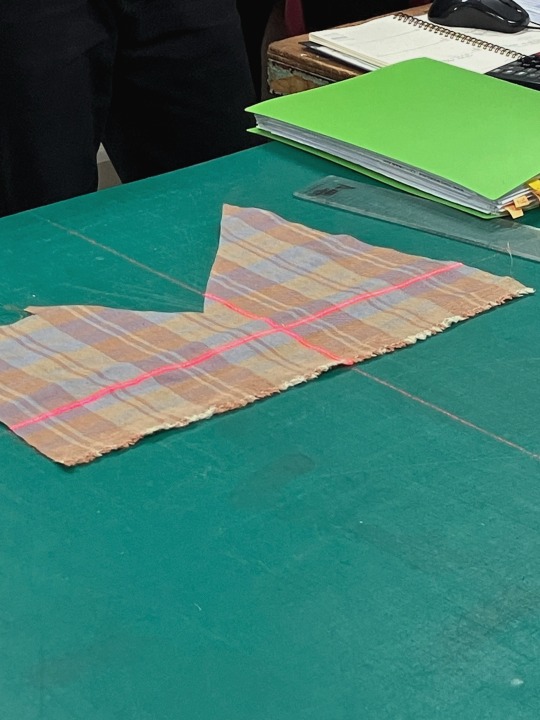
柄合わせの作業を見せてもらったのだけど、この工場では、生地がズレ無いようするため、こうやってレザーポイントを使って垂直にしっかりと生地を合わせるようにしているということだった。
(amachi.の依頼している工場ではないと思うし、依頼している工場にはその工場のやり方があるので、あくまでも参考として。)
それくらい工場も神経を使う工程になるのだ。
・
でもそれだからこそ出せる美しさはあって、この"amachi."のシャツは、そんな織物や縫製の工場の方の工夫や細部へのこだわりも欠かせないのだ。

シャツは、肩線のない独特なパターンを用いている。
そのため、スッと身体に沿って落ちるため非常にすっきりとした印象だ。

ワンピースはちょうど肩線のあたりくらいに、燕の巣を彷彿させるような異素材の切り替えがアクセントになっている。
こちら、素材は和紙になる。
もちろん、水で洗っても問題ない。

また、ちゃんとポケットも付いている。
ポケット付き。
嬉しい方も多いでのはないだろうか。

先ほど生地だけ見ると可愛いなんてお話をさせてもらったけど、ワンピースやシャツといった服に仕上がると、やっぱり上品で美しい。
店に到着して以来、何度見ても唸ってしまうようなアイテムだ。
正直、半袖シャツは僕も狙っている。
・
生地、パターン、縫製、デザイン(まあ生地もパターンも縫製もデザインの一部なんだけど)の全てがパーフェクトに揃ったアイテムになるのだ。
・
もし良かったらぜひ一度ご覧いただけると嬉しく思う。
・
なお、ワンピースの"Brown × Pink"は、現在"online shop"でもご覧いただける。
その他の色やアイテムに関しては、SNSもしくはメールにてお問合せください。
・
さて、冒頭で桜が咲くと見たくなる映画「秒速5センチメートル」の桜前線上映のお話をしたけど、僕という個人単体で見ると、桜が咲くと「秒速5センチメートル」を見たいっていうのも、ある意味では季節学に近いものなのかもしれない。
そんなことを思った。
・
季節の移ろいの中で姿を変える森。
そんな森の移ろいをイメージして生まれたテキスタイル。
素敵なテキスタイルを贅沢に、そして繊細に用いたアイテムを纏って、皆さんも季節の移ろいを装いで楽しんでもらえると嬉しく思う。
・
それでは次回もお楽しみに。
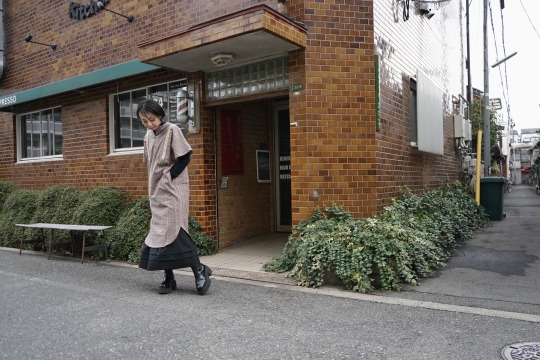
0 notes
Text
MEMO 24.02.10
・『秒速5センチメートル』3月29日からリバイバル上映 https://www.oricon.co.jp/news/2313868/ 桜前線をなぞって3/29から西日本〜南関東、4/12からは北関東~北海道の劇場で公開
1 note
·
View note
Text

youtube
#aesthetic#animation#anime#2d animation#2d#lofi#aesthetics#aestethic#Byousoku 5 Centimeter#秒速5センチメートル#5 Centimeters per Second#Five Centimeters Per Second#comix wave#2007#film#blossom#petals#street#beauty#beautiful#chill#vibe#relax#vintage#Youtube#day#city#sad#melancholy
5 notes
·
View notes
Text
恋愛について
アメリカ先住民に「イロコイ族」という人たちがいるらしい。

現地では「イロコイ」とは呼ばれてないんでしょうね、たぶん。それはともかく個人的に激しい恋愛感情ってなかったなあ(※過去形)と思って。それというのも、先日ふとしたきっかけで新海誠監督の「秒速5センチメートル」というアニメを観まして。その2話が、好きで好きで好きが止まらない!少女のエピソードだったんだけど、そういう気持ちになったことないなあと。なんとなく残念な気もするけど大変そうだし辛そう。だけど、ちょっと羨ましい。そんなことを考えてたらこんなマンガを知りました。全然詳しくないし、続きを読むか分かんないけど、ちょっと面白そう。ではでは。
0 notes
Text
1月
年女。元旦から地元の友人2人とデニーズに6時間居座り、年末年始限定メニューの存在を知る。卒業式ぶりにネイルをした。魂24周年にバリチルで開催したパーティーで初めてオーダーケーキを頼んだがかわいくて大満足。こうきとまなみと神田大明神と湯島天神に初詣に行き、一瞬リョータに会う。シネマカリテで『そばかす』を観た。
まなみと日産グローバル本社でSAKURAの試乗をし、帰りに寄った中華屋で居眠りをした。あゆみさんとすえぴとネロの店で新年会をする。
THE FIRST SLAM DUNKの衝撃。三井への恋心を15年振りに思い出す。
すみちゃんとの大人の休日倶楽部が発足し、蔵前〜合羽橋あたりを散歩。観音山フルーツパーラーでももちとあゆみさんとすえぴが初対面。帰りにみんなにつかあってもらって、Tnewtiesで靴とワンピースを買った。
ことごとくおみくじの引きが悪い。
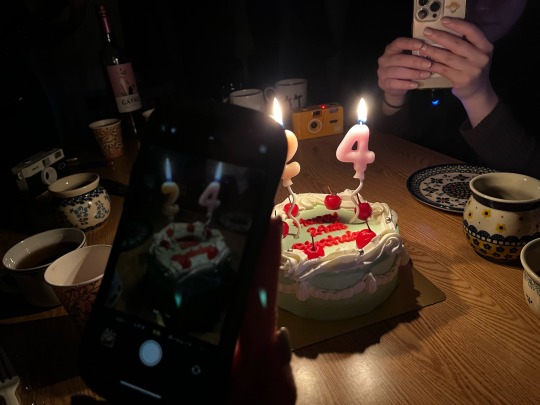
2月
休職中の同期に久しぶりに会えた。元気そうで一安心。こうき主催のスイーツ会兼合同お誕生日会。ダロワイヨでケーキをたくさん食べた。工場の同期と遊んでザファを一緒に観た(THE SECOND SLAM DUNK)ら、同期は24時間経たないうちに2回目を観に行っていた。代官山のあたりをプラプラ散歩し、無数のトイプードとすれ違ったり旧朝倉邸に住みたがったりする。自主的Tłusty czwartekでミスドを食す。
かなこと海を見てカラオケ。バリチルで三井の寿の宴を行う。21卒22卒23卒になった高校の友達と卒業旅行で箱根へ。富士屋ホテルで豪遊し、星の王子様ミュージアムに涙ながらの別れを告げる。
テニミュ青学vs氷帝が当日の公演中止でぴよと残念会。
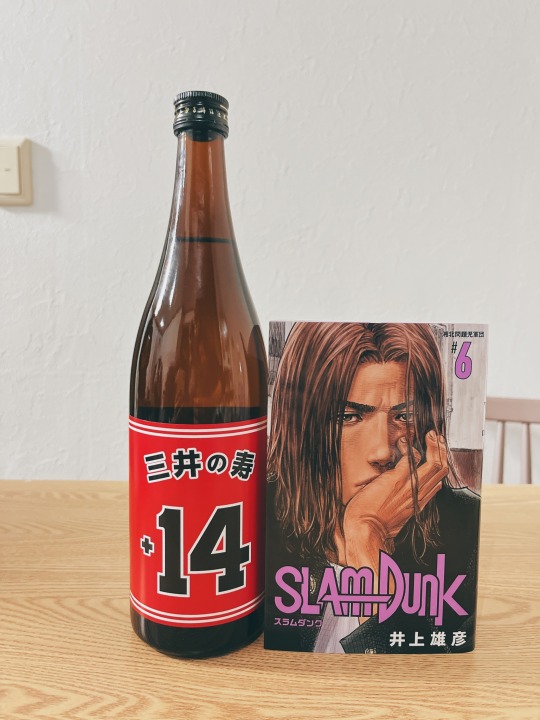
3月
同期とご飯に行ったら2ヶ月ビハインドで私のお誕生日プレートをオーダーしてくれていて、この子たちのことは何があっても守ろうと思った。私お姉ちゃんだから。
大学の部活の先輩同期とかなり久しぶりに会った。大手町有楽町エリアで昼から夜まで遊んで、現役の時もこんなに遊んだことないから新鮮だった。私はちゃっかり途中の大丸でコスデコのアイグロウジェムをタッチアップし購入していた。
妹と母と受験お疲れ様の一泊2日熱海旅行。恋愛おみくじに「六歳年下が良い」と言われてじゃあ、三井寿か。と思う。月曜有給旅行の良さを感じたが穏やかな春の熱海の空気に当てられて情緒が不安定になる。
念願の姫鶴一文字を初顕現。宝箱からかなり早い段階で飛び出してきてくれて嬉しかった。
THE THIRD SLAM DUNKで横断幕特典シールをもらう。すみちゃんとピューロに行き、バツ丸のカチューシャを買ったらマレフィセントになった。三井を応援するネームプレートを作る。
在宅後ダッシュで駒沢に向かい、まおとA東京の秋田ノーザンハピネッツ戦を観る。なまはげがいたり、ありえない技(天井ダンク)を持つマスコットキャラがいたり、選手の概念車を教えてもらえたり、SDGsがボコボコにされたりと見どころ満載。ザファのおかげでプレーの解説がしやすい。ありがとう井上雄彦。
本社の同期4人ですみだ水族館にお出かけ。大阪人の登場シーンが肩揺らしすぎ歩くの早すぎ治安悪すぎで爆笑。いつの間にか水族館に墨田区の伝統アピールとして大金魚ゾーンができており不意打ちを喰らう。その後浅草寺で引いたおみくじ:凶。
かなこと銀河劇場でマリー・キュリー観劇。すごく良かった。韓国作品らしくフェミニズムのベースに労働者の健康被害問題や企業の製造責任、資本主義批判まで織り込んでおり見事な構成力。そうこうしていたらミューマギの第二公演情報解禁があり、まさかの山﨑昌吾ジャーファルに椅子から転げ落ちる。
ぴよのお誕生日@バリチルを開催。調子に乗ってバカのバースデーケーキを買ったら大変な目に遭った。
ももちとすみちゃんの作った和風シナリオを通過。知人の作ったシナリオは初だったが手癖を感じて面白い。バカ男子大学生コンビだったのでロールプレイが楽しかった。ガチ恋粘着獣の影響でYouTuberの探索者にした。
客先から一部品番値上げOK連絡をもらい、祝いにケーキを買って帰る。ここまで足掛け半年。

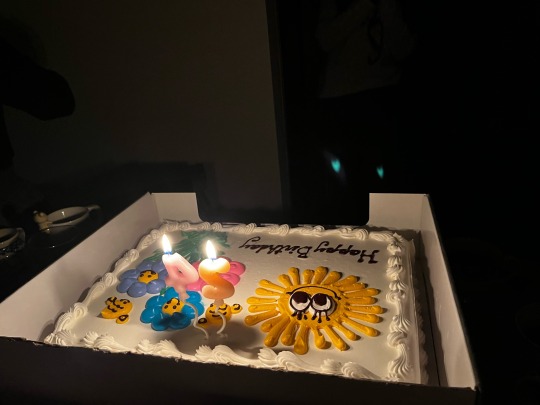
4月
まおとBunkamuraのマリー・ローランサン展を観る。ローランサンとシャネルのメディアを介したラップバトルの話やテニミュのような前衛映像で爆笑。
閉館前の三菱一号館美術館に駆け込み、グッズを買う。そのまま散歩してヒューマントラストシネマ有楽町で『ジョージア 白い橋のカフェで会いましょう』を観る。すごくリラクシングでおおらかな映画で良かった。お国柄かな。
カイザーの話をされすぎてブルロ原作を読み始める。何もかもがめちゃくちゃすぎて読んではTwitterを開き、読んではTwitterを開くハメになった。おかしすぎる漫画。
はるかさんのお誕生日会があり、ウォカジンのヘアピンで爆盛り上がり。まったく、兄貴は意外と抜けてるところがありやすからね。
すみちゃんとラシーヌの苺アフタヌーンティーに行き、ノリタケの加州安定ティーセットが届く。
アニメのオペラオーが良すぎてメロメロになる。本当に彼女のことが大好きだしこの手の人間に弱い。ウマ娘は人間ではないが。
品川区民として初めての選挙(区議会議員選挙)。出張ついでにTさんと京都で遊んで私が行きたかった京都府立植物園に付き合ってもらう。何故か28,135歩も歩いた。
わが、まお、あゆみさん、すえぴと日本橋でピザを食べてから千葉ジェッツのA東京戦を観戦。冨樫を初めて生で観た。千葉なのに東京のイキリ中学生たちがコラボしていて何故?と思う。今回は席が取れなすぎてバラバラに座ったから観ながら話せなくて残念。観戦後の焼肉で炎の男の写真撮影に興じる。

5月
2日にネスの夢小説を読み「ふ〜ん結構ネスのこと好きかもと思った」とツイートしている。
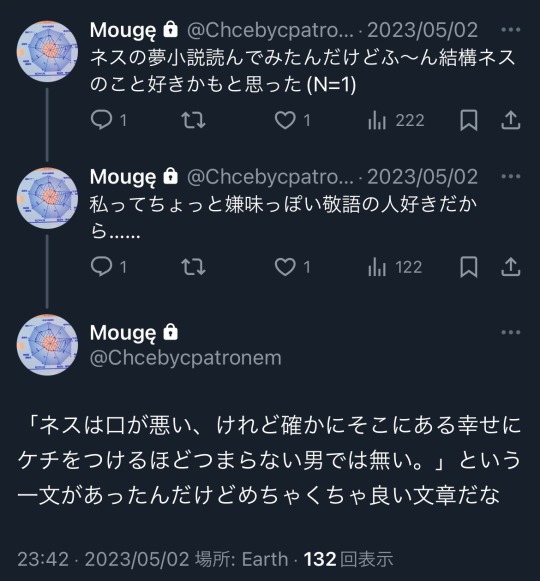
運転練習を兼ねてGWに家族で伊香保に行こうとしたが関越が混みすぎて秒速5センチメートルしか進まなくなったため途中で諦め森林公園へ行く。エゴイストなので別行動して一人だけサイクリングをした。地元のイタリアンで祖父母の誕生日祝いをした。
こうきとポコの再会。この時祖父母がこうきを質問攻めにしており申し訳なかった。
降り頻る雨の中ポラ科とポーランド祭りに行き、帰りに駅のムンバイでチャイをしばく。
金夜のミュージアムナイトですえぴとマティス展に行く。プロヴァンスの映像コーナーがあり、教会の鐘の音を聴いた瞬間幸村精市との存在しない記憶とホームシ���クの幻肢痛に襲われた。とにかくヨーロッパに行きたい。
ももちとひなと湘北を想う湘南ドライブ。逗子マリーナの駐車場が法外な値段という学びを得る。これがあゆみさんから譲り受けたネスと初めてのお出かけ。
文フリに出かけて東直子とまほぴ、安田茜にサインをもらう。のいちゃんとたほさんにもご挨拶して差し入れを渡す。いつかドームに連れて行きます!と言われて最前行きます!と返した。
こうきとすえぴ、あゆみさんが対面し4人でヴァーミリオンのポップアップへ。この時はオーブのガーネットの指輪を買った。昼食場所を探したが渋谷の人口密度が高すぎてお高めの地中海料理に入る。イスカンダルセットというワクワクセットを注文。
母の日プレゼントで母にageteのネックレスを見繕った。チャーム別売りのやつ。
すみちゃんと劇場版コナン(魚影)を観た。元太のセリフ全てと陰謀論者の目暮警部で爆笑する。観終わった後がってん寿司でうなぎを食べてネスにも見せてあげた。
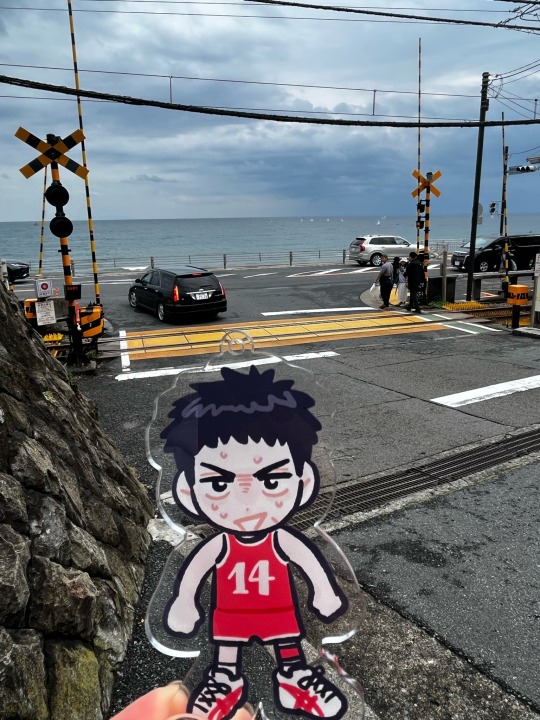
6月
マンシティvsバイエルンのチケットが当たりまくる。ここから1.5ヶ月ほどチケット捌きに奔走する。チケ取引が中学の先輩や大学の後輩に会うきっかけになったので何だかんだよかった。
すえぴとあゆみさんと六本木ヒルズで薔薇のアフタヌーンティー。スタンドの高さがありすぎて起立して写真撮影。PWCを始める。三笘が来た瞬間ゲームバランスが崩壊し三笘ゲーと化した。
ミューマギの公演が始まり、6公演入る。今回はキャストが増えたのでオープニングとエンディングの厚みがすごかった。まさかの客降りで山﨑ジャーファルさんが数メートル先を歩いて行った。長生きはするものだと思った。マギ、サイコー!でも紅玉ちゃんの個人ブロマイドがないのはまだ納得してない。アクスタが売り切れすぎて買えないかと思ったがぴよが捕獲してくれた。
ネスの夢小説を書く。執筆中は納期にミートするために定時退社していた。わりと気に入っているので続きが読みたい。
部署の奨励金で帝国ホテルのご飯を食べ、その後走って若手による新入社員歓迎会に移動。
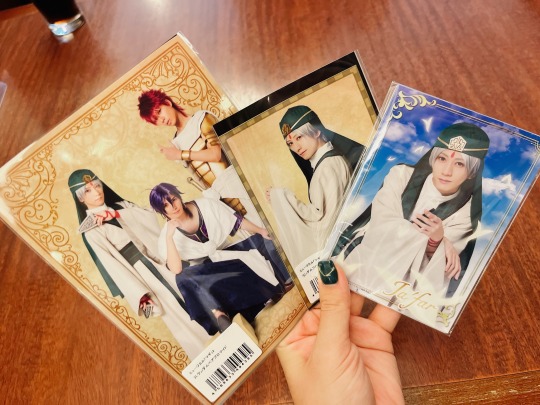
7月
前日深夜に母に誘われ、急遽クレイジー・フォー・ユーを観劇。萌さんをリアルで初拝見。エンタメに全力な作品でかなり良かった。衣装もすごい。タイミングよくたかりかさんとも会えた。
ぴよとあゆみさんと東京タワーで迷子のストライカー探し。その後言ったカフェでマスターの爺さんに絡まれ怪しげな成功譚を聞かされる。
はるかとこうきと浦和レッズvsFC東京を観戦。初めてのスタジアムだったのでドキドキだったが色々新鮮で楽しかった。埼玉出身者としてコバトンと写真撮影。試合は0-0で内容もしょっぱい。酒井も3分くらいで怪我したし。翌日に国立でこうきと町田ゼルビア vs東京Vを観戦。シチュエーションが整っておりかなり熱い試合とブーイングが見られた。
リトル・マーメイドをひなと観た。冒頭にアンデルセンの引用があり大事をあげて椅子から転げ落ちる。
あゆみさんが妄言バースの夢小説を書いてくれた。嬉しすぎて仕事中に読みまくる。やってることが10年前と同じ。
すえぴあゆみさんももちとココス呪術コラボを冷やかす。
ポラ科ドライブで秩父へ行きそばを食べる。ポテくまくん邸を表敬訪問。
あゆみさんと渋谷シティの試合観戦。コートが近く、ボールを蹴る音が聞こえてすごかった。妹と国立西洋美術館のスペインのイメージ展に行く。
大学の部活の納会に参加しバスケをした後2次会までこなす。
マンシティvsバイエルンの当日、午後休を取ってネイルを変えてから国立へ向かう。かなりお祭りムードで楽しい。こうきにバイエルンバウンドの服装を褒められて嬉しかった。はるかさんも合流して写真撮影やらトロフィーチラ見やらをした。試合はシティのパスワークのすごさとバイエルンの疲労を感じた。
バリチルでリョータとソーちゃんの誕生日会をした。

8月
地元の祭りで3年ぶりの花火がまさかの強風で打ち上げ中止。同日に花火大会があった板橋では火事が起きていたので妥当な判断だったと思う。
すみちゃんと大人の休日倶楽部有楽町編を実行し、シンガポール料理、プラネタリウム、マリアージュ・フレールを巡る。マリアージュ・フレールで友人の結婚祝いを買った。
友人の結婚パーティーに参加したが、レストランでやる簡単なものだったためか泣かなかった。中学時代のいつメンと会えて嬉しいが、私が恋愛の話題に非対応なためやりづらさはある。最近どう?と聞かれたので順調だよ〜と言ったらいつから付き合ってるんだっけ?と言われる。流れを無視して交際ではなく人生の話をしてしまいすみません。でも結婚した友人のことは誇りに思うし尊敬するし応援してる。私たちもうホグワーツにも帝光中にもいないけど、それぞれの戦場で変わらず戦おうね。
お盆は車を乗り回すためムーミンバレーパークやスタジアムジャポンや伊香保に出かけた。
ひなとまなみと島でバカンス。海で浮いたり原チャリを乗り回したりと満喫。花火もお菓子も買ったのに朝が早かったため夜ご飯後に爆睡。星が綺麗らしかったが当然見れず。護岸されていない箇所で泳ごうとしたら波が激しすぎて引き波の時に足に当たる石で流血した。
ももちこうきあゆみさんと才能の原石たちとで本能のままに餃子を食らった。あゆみさんももちまおとHUBでサバトも開催。
かなこれみかと横浜散策。ダイナーでハンバーガーを取り違えられ、中華街にあるフォーチューンアクアリウムの存在を初めて知る。
ひなとTHE FOURTH SLAM DUNK。

1 note
·
View note